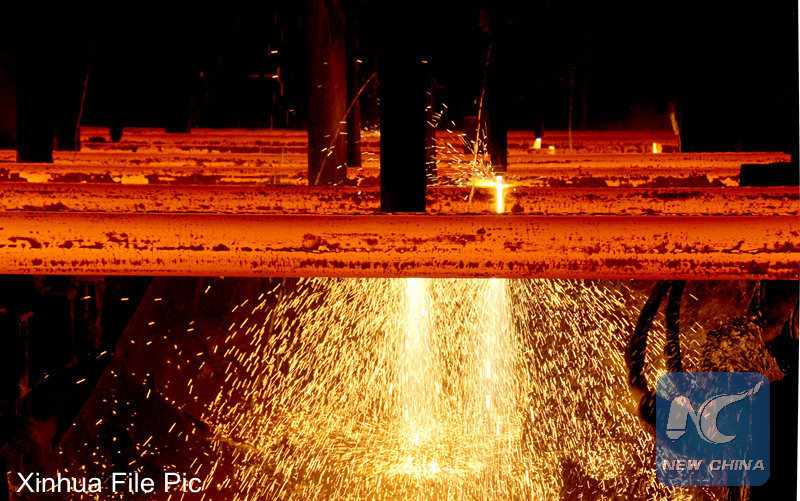antiterror13
Brigadier
Chinese scientists make breakthrough in super steel

WASHINGTON, Aug. 24 (Xinhua) -- Chinese scientists said Thursday they have developed a super steel that has a high level of both strength and ductility, a breakthrough that may have a wide variety of industrial applications.
Furthermore, its material cost is just one-fifth of that of the steel used in the current aerospace and defence applications, they reported in the U.S. journal Science.
Strength and ductility are desirable properties of metallic materials for wide-ranging applications, but increasing strength often leads to the decrease in ductility, which is known as the strength-ductility trade-off.
A Hong Kong-Beijing-Taiwan mechanical engineering team led by Huang Mingxin from the University of Hong Kong adopted a new manufacturing technique called deformed and partitioned (D&P) to addressed the problem.
"Steels have been the most widely used metallic materials in the history of mankind and can be produced with much higher efficiency than any other metallic materials," the team said in a statement.
"Therefore developing a strong and ductile breakthrough steel has been a long quest since the beginning of Iron Age in mankind history."
The team explained that it is very difficult to further improve the ductility of metallic materials when their yield strength is beyond two Gigapascal (GPa).
Now, they made "a successful attempt in realizing the above dream" as the newly developed method yields a "breakthrough steel" that has the "unprecedented" yield strength of 2.2 GPa and uniform elongation of 16 percent.
"The developed D&P steel demonstrated the best combination of yield strength and uniform elongation among all existing high-strength metallic materials," the researchers said.
"In particular, the uniform elongation of the developed D&P steel is much higher than that of metallic materials with yield strength beyond 2.0 GPa."
According to the team, the "breakthrough steel" belongs to the system of so-called medium manganese steel that contains 10 percent manganese, 0.47 percent carbon, 2.0 percent aluminium and 0.7 percent vanadium.
"No expensive alloying elements have been used exhaustively but just some common alloying compositions that can be widely seen in the commercialized steels," they said.
Another advantage is that this steel can be developed using conventional industrial processing routes, including warm rolling, cold rolling and annealing.
"This is different from the development of other metallic materials where the fabrication processes involve complex routes and special equipment, which are difficult to scale-up," said the team.
"Therefore, it is expected that the present breakthrough steel has a great potential for industrial mass production."
The research outcome was a collective contribution from scientists at the University of Hong Kong, University of Science and Technology Beijing, City University of Hong Kong, and a university in Taiwan.
2.2 GPa yield strength and uniform elongation of 16 percent! .. my gooosh. If it's not a typo, thats really huge achievement
For comparison HY-80 and HY-100 which is widely used for pressure hulls for US submarine have a yield strength of "only" 0.55 and 0.69 GPa
While normal steel bar for construction only have a yield strength of 0.30 GPa (ASTM A572)
